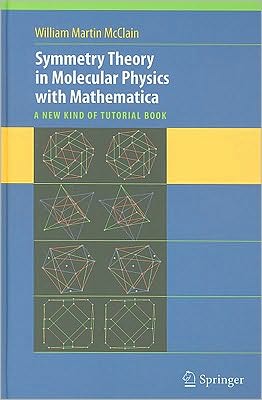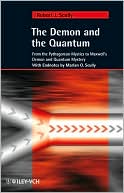Symmetry Theory in Molecular Physics with Mathematica: A new kind of tutorial book
Prof. McClain has, quite simply, produced a new kind of tutorial book. It is written using the logic engine Mathematica, which permits concrete exploration and development of every concept involved in Symmetry Theory. It is aimed at students of chemistry and molecular physics who need to know mathematical group theory and its applications, either for their own research or for understanding the language and concepts of their field. The book begins with the most elementary symmetry concepts,...
Search in google:
After a few initial chapters on the basics of Mathematica, the logic of the book is controlled by group theory. It continues to teach Mathematica by example as the need arises, so an important use is always at hand for any new operator that is taught. To many science students, this is a greatly preferred way of learning a new computer language.The main part of the book follows a strictly logical development that should be acceptable to the most rigorous minded people, while maintaining an engaging style in the spirit of Numerical Recipes by Press, Flannery, Teukolsky, and Vetterling. The essence of this style is to be just a little opinionated about good and bad ways to calculate things, but to give such advice without provoking offense, and always on an objective basis.After this comes the development of classes and irreducible representations, culminating in a complete proof that for every group the number of classes is equal to the number of representations, so that all character tables must be square. The proof is motivated throughout by numerical constructions that rouse curiosity, and draw the reader into a rediscovery of Schur’s Lemmas, which thereby become truly interesting results, rather than the mysterious, dry statements often presented. This section culminates in a method for calculating the entire character table of a group. This is especially important for permutation groups that describe flexible molecules, for which are there very few published character tables. Once the character tables are established, the real meat of physical applications can begin. The author emphasizes that every application has the same structure: (1) The construction of a reducible representation on the basis of some physical property, (2) its separation into irreducible components, and (3) the interpretation in terms of the "symmetry species" so produced. Because Mathematica and the xyz representations are close at hand, the separation into irreducible components can be done quickly.The CD-ROM included with the book presents the entire content of the book plus interactive examples using notebooks (Version 5.2) for problem solving and learning.







